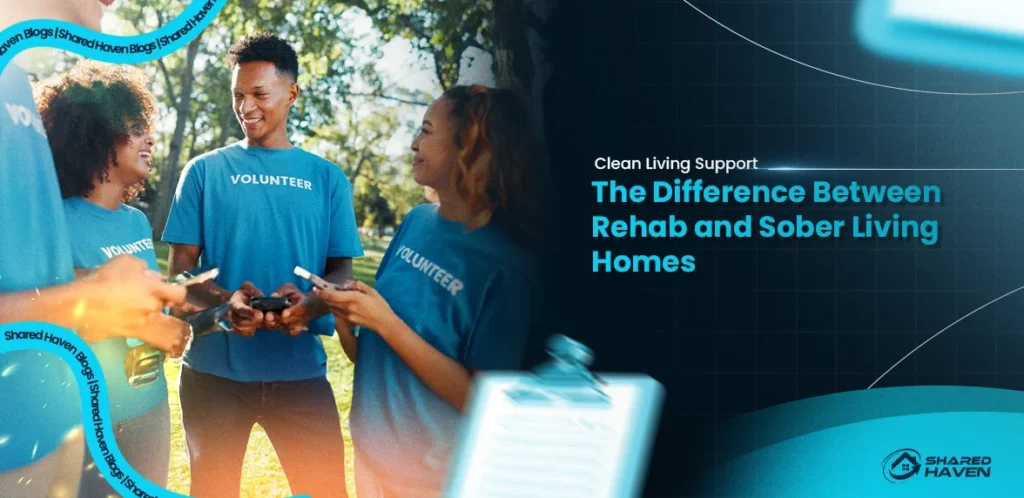Sober Living vs Rehab: Understanding Your Recovery Options
The path to recovery is undoubtedly a personal journey. Furthermore, for many people, it starts with professional help. Additionally, this can lead to inpatient rehabilitation programs. However, that is often just the beginning step. Moreover, after rehab, a new stage of recovery begins. Therefore, sober living homes become a vital resource. Furthermore, they are not the same as rehab facilities. Additionally, it is important to know the key differences. Moreover, understanding these differences helps people make smart choices. Therefore, it ensures a person gets the right support. Furthermore, both are critical recovery tools effectively. Additionally, they serve different purposes in recovery. Therefore, this guide will clarify the two options. Moreover, it will explain how they fit into recovery plans.
Rehab: The First Step in Treatment
Rehab is primarily a clinical setting. Furthermore, it offers intensive medical care. Additionally, it provides constant medical supervision. Moreover, the environment is highly structured throughout. Furthermore, the staff includes doctors, nurses, and therapists. Additionally, this type of care targets initial recovery stages. Moreover, the focus is on detox processes. Furthermore, this is a medically supervised process.
Additionally, it helps a person safely withdraw from substances. Moreover, the goal is also stabilizing the patient. Furthermore, people live on-site in controlled environments. Additionally, they attend regular therapy sessions. Moreover, this can include individual or group therapy. Furthermore, they also participate in family counseling sessions. Additionally, the goal is addressing addiction’s root causes. Moreover, it is teaching new coping skills. Furthermore, this is often a short-term solution. Therefore, it provides a foundation for sobriety.
What is a Sober Living Home?
A sober living home is essentially a residential property. Furthermore, it is for people in recovery. Additionally, it is a group living environment. Moreover, the primary goal is supporting sobriety. Furthermore, sober living is not a clinical setting. Additionally, there is no on-site medical staff. Moreover, it is an independent living situation. Furthermore, residents share a common goal together. Additionally, they want to stay sober and rebuild lives. Moreover, it is a bridge between rehab and reality
. Furthermore, a person can practice new skills here. Additionally, they do this without independent living pressures. Moreover, this safe and structured environment is crucial. Furthermore, it provides a sense of community. Additionally, sober living is a vital recovery journey part. Moreover, different types of sober living homes exist. Furthermore, some are gender-specific facilities exclusively. Additionally, some are geared towards certain age groups. Moreover, others follow specific recovery models, like Oxford House.
Key Differences in Structure
Rehab and sober living have different structures. Furthermore, rehab is a highly controlled environment. Additionally, the daily schedule is rigid throughout. Moreover, patients have little personal freedom. Furthermore, their activities are supervised constantly. Additionally, the focus is on therapy and treatment. Moreover, the day is often filled with sessions. Furthermore, these include group therapy, individual counseling, and classes. Additionally, sober living offers much more freedom.
Moreover, residents manage their own schedules independently. Furthermore, they look for jobs or attend school. Additionally, they perform household chores regularly. Moreover, they attend outside support meetings. Furthermore, the rules are focused on accountability. Additionally, they are not as restrictive as rehab. Moreover, the structure in sober living prepares people. Furthermore, it helps them transition back into society. Additionally, it is a gradual process overall. Therefore, it allows for increasing independence.
Professionals vs. Peers in Sober Living
The staff in rehab are all professionals. Furthermore, they are experts in addiction treatment. Additionally, they are doctors, counselors, and social workers. Moreover, their role is providing comprehensive treatment. Furthermore, they guide patients through their recovery journey. Additionally, in many cases, they treat co-occurring disorders. Moreover, sober living works very differently overall. Furthermore, it is often peer-led effectively. Additionally, there is no clinical staff on-site. Moreover, the support comes from other residents.
Furthermore, these are people with lived experience. Additionally, they understand the struggles personally. Moreover, they can offer a unique perspective. Furthermore, a house manager might be present. Additionally, this person is also in recovery. Moreover, they are there to enforce rules. Furthermore, they provide guidance when needed. Additionally, the support is based on empathy. Moreover, the feeling of being understood is powerful. Furthermore, the community holds everyone accountable together. Therefore, this peer-based support makes sober living effective.
Cost and Length of Stay
The cost of rehab can be very high. Furthermore, it often involves professional medical care. Additionally, insurance may cover some of it. Moreover, it is important to check with providers. Furthermore, many organizations and state programs offer scholarships. Additionally, a typical stay can last 30-90 days. Moreover, some programs can last longer periods.
Furthermore, the cost of sober living is lower. Additionally, it is similar to renting a room. Moreover, it is a monthly fee structure. Furthermore, it covers the cost of rent and utilities. Additionally, a person can stay for several months. Moreover, they can even stay for years. Furthermore, the length of stay is flexible. Additionally, it depends on a person’s individual needs. Moreover, the affordability and flexibility of sober living helps. Therefore, it is a sustainable option for recovery.
Why Both Are Necessary
Rehab and sober living are not competing options. Furthermore, they are part of a complete plan. Additionally, rehab provides the intensive treatment needed initially. Moreover, it helps a person stop using substances. Furthermore, it helps them get stable physically.
Additionally, sober living provides the essential next step. Moreover, it is where a person applies lessons. Furthermore, it is where they practice living soberly. Additionally, it is the real-world test phase. Moreover, a person who only goes to rehab risks. Furthermore, they might struggle without the transition period. Additionally, a person who only goes to sober living. Moreover, they may not get needed clinical care. Furthermore, both work together to help people. Therefore, they create a continuum of care. Moreover, this approach increases chances of lasting sobriety.
Conclusion: A Complete Recovery Journey
Both rehab and sober living are critical tools. Furthermore, rehab offers intensive, professional medical care. Additionally, it provides the foundation for sobriety. Moreover, it is the beginning of the journey. Furthermore, sober living homes offer a supportive bridge. Additionally, it connects treatment to an independent life. Moreover, it is where a person builds skills. Furthermore, it is where they learn sober living. Additionally, understanding the difference is key to success. Moreover, it helps you choose the right path. Furthermore, both are about healing and growth. Therefore, they are about building a new, healthy life.
National Hotline for substance abuse


